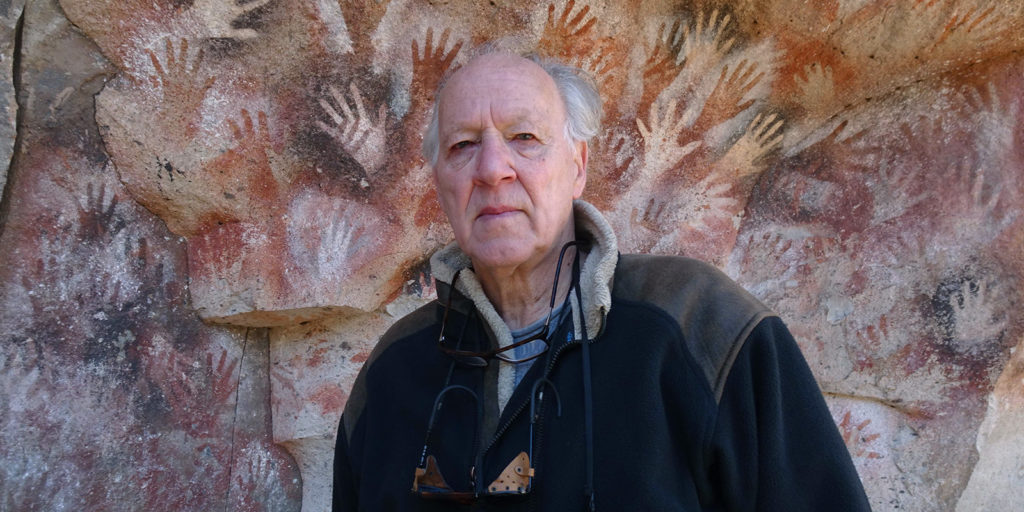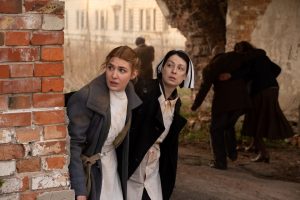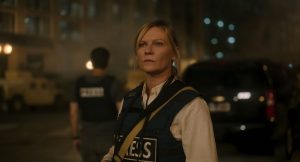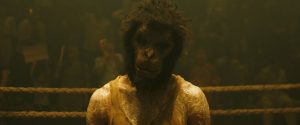Reviews include Irena’s Vow, The Beast, and Before I Change My Mind.
VIFF 2019: Cinematic Vibrancy
October 10, 2019
“A premiere showcase for innovation in Canadian independent cinema.”
In my preceding report from this year’s Vancouver International Film Festival, I spoke with Deragh Campbell, the actor and co-auteur, with Sofia Bohdanowicz, of MS Slavic 7, a major highlight of VIFF ’19 and the paragon of the festival’s Future//Present program, curated by Adam Cook, which, now in its fourth year, has established itself as a premiere showcase for innovation in Canadian independent cinema.
Curiously, Future//Present’s other most impressive title —a mong those that didn’t screen at TIFF ’19 — shares some striking thematic continuity with MS Slavic 7. Co-directed by Winnipeg’s Aaron Zeghers and Vancouver’s Lewis Bennett, DANNY, like MS, explores a fraught familial legacy and was born of a fascination with archival materials. Zeghers and Bennett’s mid-length feature is, in fact, constructed entirely from found footage.

After having moved from Winnipeg to Vancouver as a means of taking space from his family and reclaiming his autonomy, Zeghers’ uncle Danny, a 43-year-old bachelor, is diagnosed with leukemia. In response, Danny begins a video diary, shooting on consumer-grade videotape circa 1993, speaking directly to camera in a matter mimetic of psychotherapy — something Danny had previously explored. Years later, Zeghers inherited the trove of tapes from his grandfather and, recognizing their cinematic value but feeling overwhelmed with his charge, passed them onto Bennett to edit. The result is a poignant, frequently funny portrait of a compulsively self-reflexive loner weathering the ultimate existential crisis through a conversation with himself, a testament to Marianne Moore’s assertion that “the cure for loneliness of solitude.” The film’s peculiar spiritual calculus suggests that a death sentence transformed Danny, who harboured creative ambitions, into a nascent filmmaker. Danny died in 1994, but thanks to Zeghers and Bennett’s playful but judicious, respectful assembly, his charismatic mirror-musings have found an audience beyond his immediate descendants.
By sheer coincidence, visual artist Carol Sawyer’s latest series, The Scholar’s Study, was being exhibited at Vancouver’s Republic Gallery while VIFF ’19 was underway. Like MS Slavic 7 and Danny, The Scholar’s Study too is a response to a dead relative’s legacy and repurposing of archival materials. Sawyer’s exquisite photos and luminous, hypnogogic videos represent her attempt to reckon with the estate of her late father, an art historian, imbuing his personal effects with an oneiric quality, arranging them in totemic, spinning columns or having them spill into the center of a bifurcated screen. Each piece in The Scholar’s Study is alluring and moving and, besides their obvious resonance with the aforementioned Future//Present titles, reminded me of the unusual degree to which artists’ work can translate into cinema. As it happens, VIFF has a program for just this sort of thing.
M/A/D, or Music/Art/Design, consists of documentary profiles of artists working in a variety of forms. Among the strongest titles I was able to see were Daniel Traub’s Ursula Von Rydingsvard: Into Her Own, which explores the life and art of the titular sculptor, whose monolithic works wrought from cedar, often with the aid of a chainsaw, possess a cinematic vibrancy, while her personal story, involving a childhood spent moving through WWII refugee camps, a troubled early marriage and a spell as an unknown, tenacious single mother making her way in the mean streets of mid-70s New York, is a compelling chronicle of channeling trauma into creativity and resourcefulness. Likewise, Christoph Schaub’s Architecture of Infinity profiles a quintet of renowned architects from Europe and the Americas who have created fascinating places of worship that interact with their surroundings in ways that seemed designed for filmic treatment.

“There’s no such thing as a Herzog film without moments of tremendous value.”
The most famous filmmaker-subject combo in M/A/D, however, was easily found in Werner Herzog’s Nomad: In the Footsteps of Bruce Chatwin, which, in typical Herzogian fashion, assumes an eccentric and highly personal modus operandi in its consideration of the late British author of In Patagonia and The Songlines, a seductive personality and restless seeker of remote locales, obscure rituals and strange characters. Like Herzog, Chatwin never let the facts get in the way of a good story. As one of his biographers puts it, Chatwin didn’t tell half-truths but, rather, the truth and a half. As the film’s title suggests, Herzog travels to many of the places once visited and explored by Chatwin, who was a friend, kindred spirit and collaborator—Herzog’s Cobra Verde was based on Chatwin’s The Viceroy of Ouidah. I know Herzog has become a bit of a caricature in the eyes of some, an over-prolific artist whose personality is too reliant on shticky self-aggrandizement, but watching Nomad, which screened at neither TIFF nor Hot Docs, reminded me that there’s no such thing as a Herzog film without moments of tremendous value. What’s more, Nomad features an event that I don’t think has ever transpired in Herzog’s previous five decades of filmmaking: at one point, the stoic Bavarian auteur, while fondling the leather rucksack he inherited from Chatwin, who died from AIDS in 1989, actually chokes up. It’s a moment of genuine emotion from a dyed-in-the-wool showman, and its poignancy ripples through the rest of this lovely travelogue-portrait.
By José Teodoro



